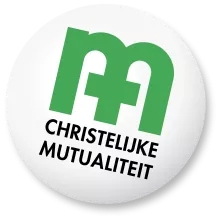Physiotherapy: treatments F-chronic
For certain conditions, reimbursement of physiotherapy treatments is possible as an F-chronic condition.

Certain conditions of a chronic nature require intensive treatment for a longer period and are treated as F-chronic. These conditions are listed in art. 7, §14, 5° B of the nomenclature; the provision codes in art. 7, §1, 6°.
Maximum number and nomenclature
F-chronic treatment runs until the end of the second calendar year following the calendar year of the first session or extension.
Per calendar year you are entitled to a refund of:
- maximum of sixty sessions (1st to 60th: 563614, 563710, 563813, 563916, 564012, 564631, 564174, 564093, 639656, 639671, 639693, 639715, 639730, 6398 33, 639774 and 639752);
- plus twenty sessions with a lower reimbursement (61st to 80th: 564270, 564292, 564314, 564336, 564351, 564653 and 564373).
The maximum number of sixty sessions (first to sixtieth) also applies to the treatment of lymphedema (pathology 60), where both types of provision must be added together.
If during the same year the treatment of the same pathology requires more sessions than the maximum, the treatment can be continued from the 81st session with a reduced reimbursement (563651, 563754, 563850, 563953, 564056, 564675, 564130).
Notification
For each pathology you must send an F-chronic notification to the CM's consulting physician. No refund is possible until the consulting physician has received a valid notification.
The following information must be included on the notification:
- the patient's identification details;
- your identification details;
- the start date of the treatment;
- the pathology treated;
- confirmation that you have a prescription and that you know the standards for care.
The notification is invalid if you modify the text, add comments, fill in the form incompletely or use a different form.
Extension
If the notification is no longer valid, the treatment of the same pathology can be extended provided you submit a new notification .
Is there already a treatment period for another F-chronic pathology? Then the extension will not be permitted .
Request additional hearings
If a new F-chronic pathology occurs during the term of the notification, the consulting physician may grant additional sessions based on a request.
That request contains :
- a notification of the new pathology;
- a report from the treating physician with the successive conditions and their date of onset;
or
a report from you, drawn up on the basis of the regulations, with an overview of the successive conditions and their starting date + copies of the regulations.
The number of additional sessions per new pathology F-chronic is a maximum of 60 + 20 sessions, valid during the current calendar year. During the two subsequent calendar years, you can only charge for 60 + 20 sessions per calendar year for the two treatments together.
In the event of a first new current pathology (which has nothing to do with the current F-chronic) during the current calendar year , no request for additional sessions is required (possibility to charge for eighteen current sessions in addition to the F sessions).
From a second new current pathology during the calendar year or in the case of an F-acute condition, a request for additional sessions is required and a notification for the F-acute treatment. The regulations of both the current F-chronic and the current sessions must be added to this application. You may not charge for additional sessions before the advising doctor has given his approval.
Treatment of lymphedema
There are medical conditions linked to the reimbursement of the treatment of lymphedema (pathology 60) with sessions F-chronic (639656, 639671, 639693, 639715, 639730, 639833, 639774 and 639752).
- Either a perimetry performed on the entire limb or a volumetry of the hand or foot shows a difference of 5 to 10 percent compared to the contralateral limb. The measurements must be carried out according to the protocols of the RIZIV.
- Alternatively, a three-step lymphoscintigraphy confirms the severity of the diagnosis if two minor criteria are met according to the lymphoscintigraphic classification of the edema.
A three-step lymphoscintigraphy should confirm the diagnosis where two minor criteria are met according to the lymphoscintigraphic classification of the edema.
Keep the perimetry, volumetrics, a copy of the lymphoscintigraphic protocol or the report on the clinical necessity to extend the treatment in the physiotherapy file.
Lymphoscintigraphy is not required :
- for children under the age of 14 for whom a three-step lymphoscintigraphy is not indicated;
- in the event of justified physical impossibility to carry out this research.
In these cases, the specialist provides a substantiated report to the consulting physician, justifying the diagnosis and the need for treatment. You keep the report in the physiotherapy file.
